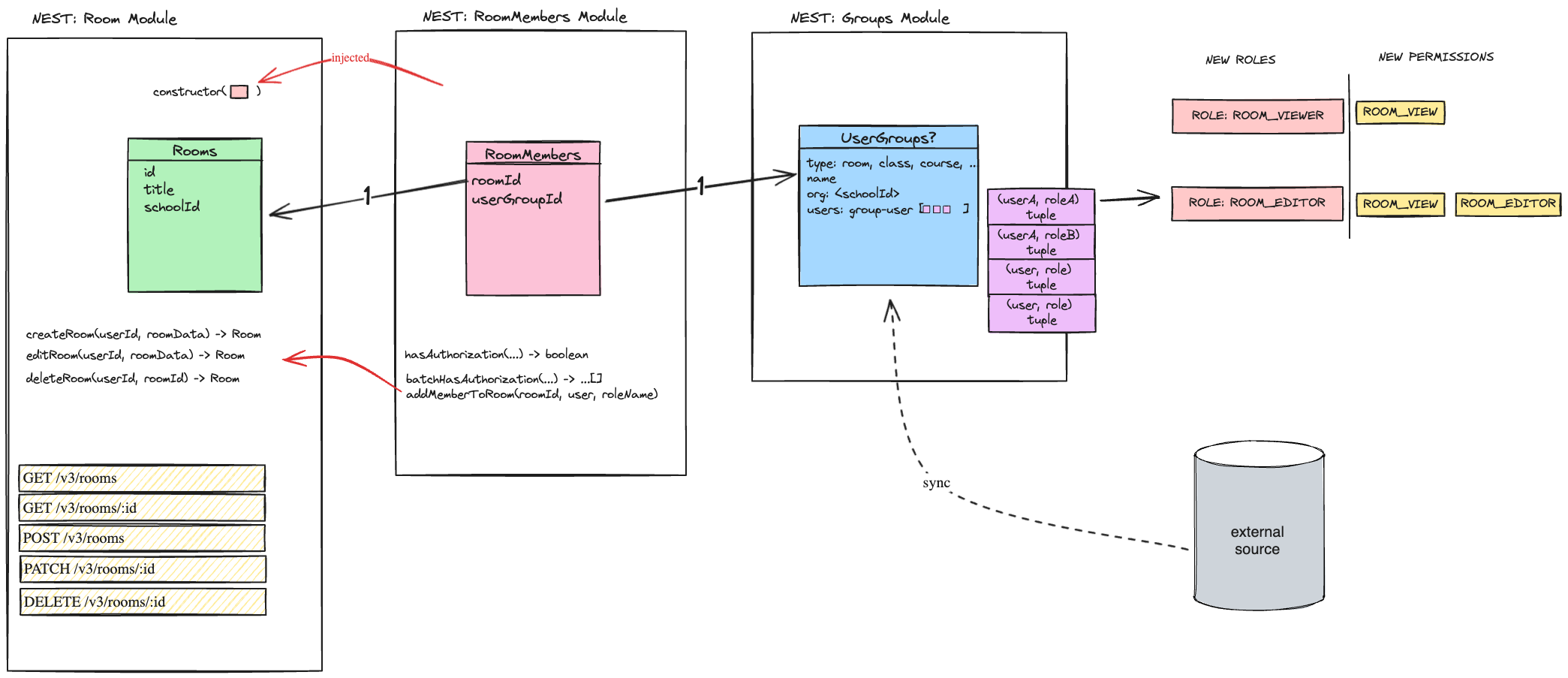Room Member Module
The Room Member module manages the association between users and rooms, handling permissions and roles within rooms. This module is designed to be injected into the Room module for managing user access and roles within rooms.
Model Relationships

- Room have one RoomMembers
- RoomMember have one UserGroup
- UserGroup have many Users
- Each User in UserGroup have Role
This make room membership easy manage. Can give different roles to users in same room.
RoomMemberEntity
The core entity of this module is the RoomMemberEntity, which represents a user's membership in a room.
@Entity({ tableName: 'room-members' })
export class RoomMemberEntity extends BaseEntityWithTimestamps implements RoomMemberProps {
@Property()
@Index()
roomId!: ObjectId;
@OneToOne(() => GroupEntity, { owner: true, orphanRemoval: true })
userGroup!: GroupEntity;
@Property({ persist: false })
domainObject: RoomMember | undefined;
}
The important part is the userGroup property.
We store the the members using the Group module.
Why? => Because that allows us to assign each user a separate role within the room.
e.g. ROOM_EDITOR, ROOM_VIEWER, ...
These roles are not related to the user's global role.
GroupEntity
The userGroup property uses the GroupEntity from the Group module. This structure allows for multiple users to be associated with a room through a single group.
class GroupEntity {
id: EntityId;
name: string;
users: GroupUserEmbeddable[];
// other properties...
}
GroupUserEmbeddable
Each user in the group is represented by a GroupUserEmbeddable:
class GroupUserEmbeddable {
user: User;
role: Role;
}
This structure allows for flexible assignment of roles to users within the context of a room.
Key Points
- The
RoomMemberEntitydoesn't directly store user IDs or roles. Instead, it uses aGroupEntityto manage this information. - This design allows for easy management of multiple users and roles for a single room.
- The
roomIdis stored directly on theRoomMemberEntityfor efficient querying of members for a specific room. - The
domainObjectproperty facilitates the separation between the database entity and the domain object. This is an optimization to not loose the unit of work using mikro-orm.
This structure provides a flexible and scalable way to manage room memberships, allowing for complex permission and role scenarios within rooms.
Service
The RoomMemberService is a service for the RoomMember entity. It provides methods for creating, updating, and deleting RoomMember entities.
class RoomMemberService {
constructor(private readonly roomMembersRepo: RoomMemberRepo) {}
}
Usage
The RoomMemberService is designed to be injected into the Room module for managing user access and roles within rooms.
API
There is no API for now. Member specific writes/reads can be implemented by adding an API to the RoomMember module. Like adding/removing users to a room.